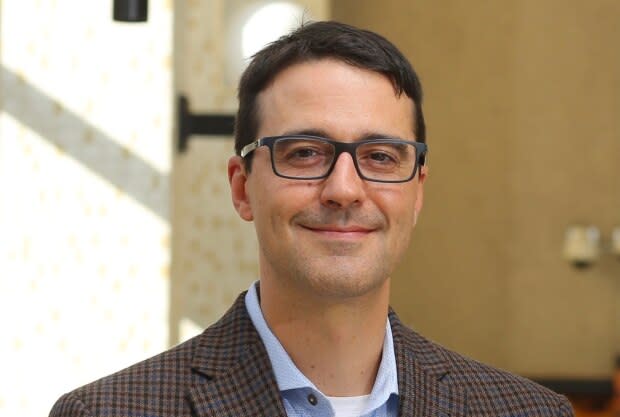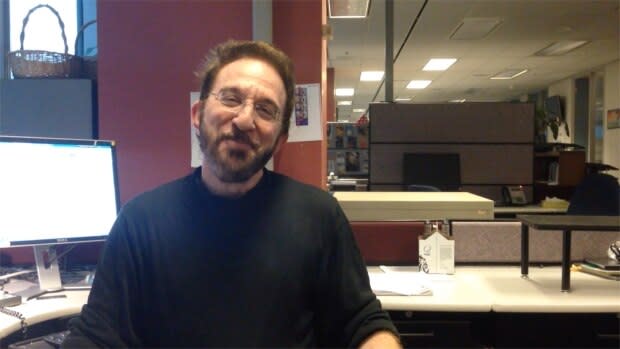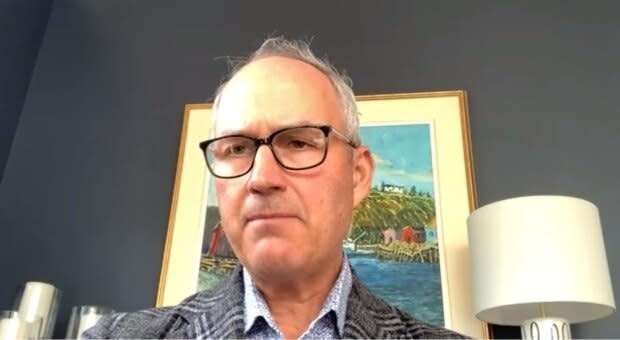Virtual health care gets positive early reviews in New Brunswick
Prince Edward Island potato farmer Paul MacAulay spent 32 days away from his work and family last spring because he needed heart surgery during the pandemic.
It meant hospitalization in Charlottetown, followed by a transfer to the New Brunswick Heart Centre at the Saint John Regional Hospital, where MacAulay spent time in isolation before his operation.
Compared to all that, his phone call follow-up came as a relief.
"It saved another trip to New Brunswick," said the 70-year-old, adding up the costs for a two-day trip.
"You have your bridge, your gas and your accommodation and then there's food. It's probably 400 dollars."
MacAulay's surgeon, Dr. Jean-François Légaré, said COVID-19 has caused a big switch to virtual care, something that he and his colleagues would like to see continue.

"On a weekly basis, I would see between 10 and 20 patients just for follow-up. Now I see 80 per cent plus, virtually," he said.
"Not that it wasn't possible before, we did use tele-medicine but not to this scale."
Tweaks in technology have also helped the shift, he said.
For example, his computer system now registers Légaré's virtual visits and he can dictate his notes about what was done and what was decided to the referring physician.
"It's a record that everyone can use and it's immediate," he said.
"These are all little things that for some reason didn't happen before, but now it's automatic and I'll give kudos to the government and the health authorities and the medical society. Everybody got on board."
'It's a five-minute phone call'
While the New Brunswick Medical Society says 90 per cent of physicians across the province have reported using virtual care during the pandemic, it's also happening in other fields of care.
Michelle Corcoran, a registered dietitian and diabetes educator, said her practice in the Woodstock area has been transformed.
Instead of driving to meet as many as 45 patients per week, she catches most of them by phone.
"This is great because I can call you when I need you," she said.
"It's a five-minute phone call."

Corcoran said she does miss some in-person connection.
Over the phone, she can't see where a person is giving their insulin on their body nor can she see the condition of their feet.
She sometimes wonders if she's missing out on non-verbal cues that would help her assess a patient's mental well-being.
She said that's why in-person visits won't disappear entirely and remain an option, even now.
"Virtual care is a partner, between those face-to-face contacts," she said.
A national survey commissioned by Diabetes Canada in June found more than 70 per cent of 1,000 respondents reported receiving care by phone or video conference and that more than half of them found it was as good as meeting in person.
Why did it take a pandemic?
Dr. Brian Goldman, a Toronton physician and host of CBC's White Coat, Black Art, said before the pandemic there was tremendous resistance in Canada to switching to virtual care.
He said some of it came from providers who felt they couldn't do proper assessments without seeing people in person.
"That was the fear," said Goldman.

"But the excuse was invariably privacy. That somehow I, as a care practitioner, would be guilty of violating privacy and I'd be subject to provincial fines.
"Privacy has been the third rail of health-care innovation for years."
Goldman said the pandemic changed that equation and impacted the system in ways that were unthinkable even just a year ago.
"The idea that people could be in danger of being neglected because they had no contact
with their family physician or nurse practitioner, that was the factor that made virtual health care not only desirable but essential, I would argue, during the time of COVID-19."
Goldman said the other critical piece was the rapid change in fee-for-service billing.
If that hadn't happened, he said it would have been the "deal-breaker of deal-breakers."
New fee codes
Across the country, in response to COVID-19, provinces introduced a whole new suite of billing codes so that doctors could be compensated for meeting with patients on virtual platforms.
In New Brunswick, it happened in two phases, said Anthony Knight, CEO of the New Brunswick Medical Society.
First, the government introduced a single billing code worth 45 dollars per virtual visit, just shy of the $47.50 for an in-person visit with a family physician.
Then six weeks ago, Knight said the province agreed to open up billing so that almost anything that could be done on a virtual platform could be billed at the same rate as if it were done in person.

He said that impacted as much as 3,000 fee-for-service codes and he called it the most flexible billing response to virtual care in Canada.
"Things really happened," said Dr. Chris Goodyear, president of the New Brunswick Medical Society, which had been pushing for change long before the pandemic.
"Overnight, the provincial government responded, acting very quickly on the adoption of billing for virtual visits.
"Without really a lot of negotiation, the billing for physicians, for virtual platforms and the ability to be paid for it, that issue was resolved really quickly."
Goodyear said COVID-19 also sped up changes to the long-standing problem of hospital overcrowding.
For decades, New Brunswick has been wrestling with what to do with patients who are living in hospitals when they need to be in nursing homes but can't get placed.
"As someone who works in the hospital, I know that within that first week after the shutdown, we emptied all the hospitals in New Brunswick down to less than 50 per cent capacity overnight," said Goodyear.
"So a lot of barriers were broken down when we were actually forced to do it."
But back on the topic of virtual care, Goodyear said it hasn't reached its potential yet.
He said he thinks it can expand to help patients in rural areas, orphaned patients in urban areas, the elderly and those with mobility issues or in cases where travel is difficult during the winter.
"The ceiling is limitless as to what we can do here and hopefully, it will be part of our solution to our health-care problems."


